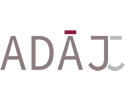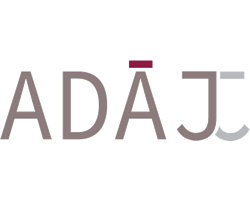
Recognizing the segmentation and stratification that gradually developed in the legal and judicial community and the ensuing need for a unifying project able to facilitate greater access to law and justice, ADAJ’s proposed partnership is both substantial and diversified. Hence one of the objectives of ADAJ is to establish the groundwork for ongoing cooperation both within the legal community and between the legal community members and the university research professionals. The entire project is focused on the citizen’s needs, which explains why it treats the general public representatives and the associative sector (NGOs) representatives in their own right as actors in the legal world.
Challenges and directions
The project faces numerous challenges. In effect, the legal world brings together actors that are in tension with one another, either because of their respective interests or because of their specific role in the legal system, or simply due to the disruptions that any change in perspective might impose on their practice or on the underlying logic of their professions. Some recent initiatives (for example the creation, in the wake of the Cromwell Report, of the Quebec Forum on Access to Civil and Family Justice) are intended to build bridges between these solitudes, a goal to which ADAJ is directly contributing, even if much remains to be done by way of concrete action. As it stands, ADAJ’s strategy is intended to lay a common foundation for this type of cooperation by setting common priorities and developing strategies for change.
A second challenge relates to the absence of a genuine research culture within the legal / judicial community. Unlike the education or the healthcare fields, the legal system, which is premised on the quest for truth as established by legislation and on the search for certainty in the rule of law, remains one of the least researched fields of endeavour. The legal field bases its legitimacy on the honour, independence and dignity of the institution and on the prestige of the legal profession. This concept of judicial activity is averse to evaluation or investigation by researchers from other disciplines. The ADAJ team’s addresses this difficulty by implementing a new approach to legal research and creating a team of largely researcher-jurists from a wide variety of practices, working alongside researchers from a variety of other disciplines to together respond to the very concrete issues involved. At the same time it must be observed that, in more recent years, innovative research involving many of these same partners has made it possible to undertake much larger initiatives like the ADAJ proposal.
Our third challenge is the sheer number of partners and the need to mount a research project tailored to multiple and often quite unfocused concerns. In building on partners’ proposals and focusing the research on the concrete realities that each actor considers crucial, ADAJ’s main contribution is essentially one of shedding light on the links that connect the various partners’ insights and hypotheses with one another, while allowing the actors to play a role in achieving accessibility goals that believe in. At another level, because research must address concrete topics and situations that each actor considers crucial, ADAJ’s work is primarily based on the partners’ proposals. This approach allows the project to be carried out on a scale that enables the research’s conclusions to make a vital contribution to both the legal profession and the university community, and in doing so to satisfy the combined requirements of knowledge creation and practical action.
To address those imperatives, ADAJ’s proposed partnership is informed by the principles of interest, proximity, commitment and equality.
Essentially each ADAJ proposed research hub, intending to build on the partners’ interests, is based on their proposals, which in turn ensures their preparedness to see the particular project materialized. While all legal institution actors acknowledge some issues (for example self-representation), other issues are addressed by specific partners and other actors that they were able to involve, as is the case with the hub on Legal education in high schools (Éducaloi), the hub on Paperless justice (Sarrazin Plourde), and the hub on accessible dockets (Soquij). This approach allowed us to ensure that every project would address a specific need, and by virtue of this, would respond to the partners’ real concerns.
A direct corollary of interest, the principle of proximity requires that researchers and partners work closely together. None of the intended research hubs can be achieved without such ongoing participation. While shared projects (e.g. on judicial statistics, on social expectations and awareness of law) are intended to extensively document issues of access to law and justice, each of the program’s 15 pilot projects relies on the contribution of specific partners. Thus, subdividing the project in many research hubs proves to be effectively functional, ensuring the partners’ real involvement in both the definition and the implementation of each research hub. In addition, each pilot project is structured in a way that allows experimentation with different social and legal innovations, each requiring the full participation of the relevant actors and institutions.
The principal of commitment follows a similar logic. We asked each partner to clearly indicate the level of its intended involvement, both in-kind and in-cash, within their institutional, financial and organizational limits and constraints. While some actors (e.g. tribunals) were reluctant to put a specific figure on their involvement, all committed to doing so and expressed, in their letters of support, their interest for the project, their intended involvement in one hub or another (sometimes in many), and the make-up of their particular contribution.
The ADAJ team is particularly committed to the principle of equality between all partners. The fields of law and justice are rife with tensions that slowly emerged between professions, jurisdictions, areas of practice, and conflicting definitions of the purposes of the law. Often this results in various types of unequal relationships between the traditional actors (tribunals, government departments, professional bodies) and social actors at work on improving the legal system (e.g. alternative justice groups, community justice centres, legal aid clinics, public legal education NGOs, etc.). As a consequence, the structures of the legal community are very hierarchical. These cleavages can hinder the design, experimentation, recognition and dissemination of innovative legal practices. But often alternative practices themselves tend to develop in “innovative environments”, precisely because they are less institutionalized. Such is the condition for a permanent ongoing reform of access to law and justice practices. This is why the principle of equality in the relationships is so critical to ADAJ’s partnership model. Our model ensures that all partners participate, without consideration of the level of their financial contribution or their status within the justice system. This allows the project to give innovative milieus their rightful place.

